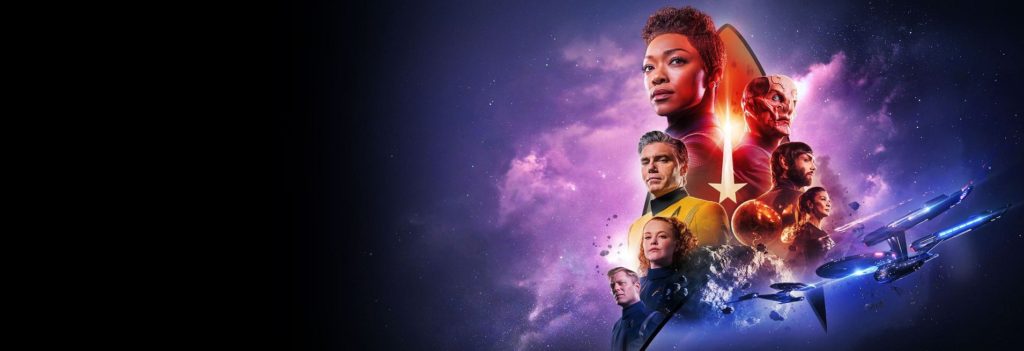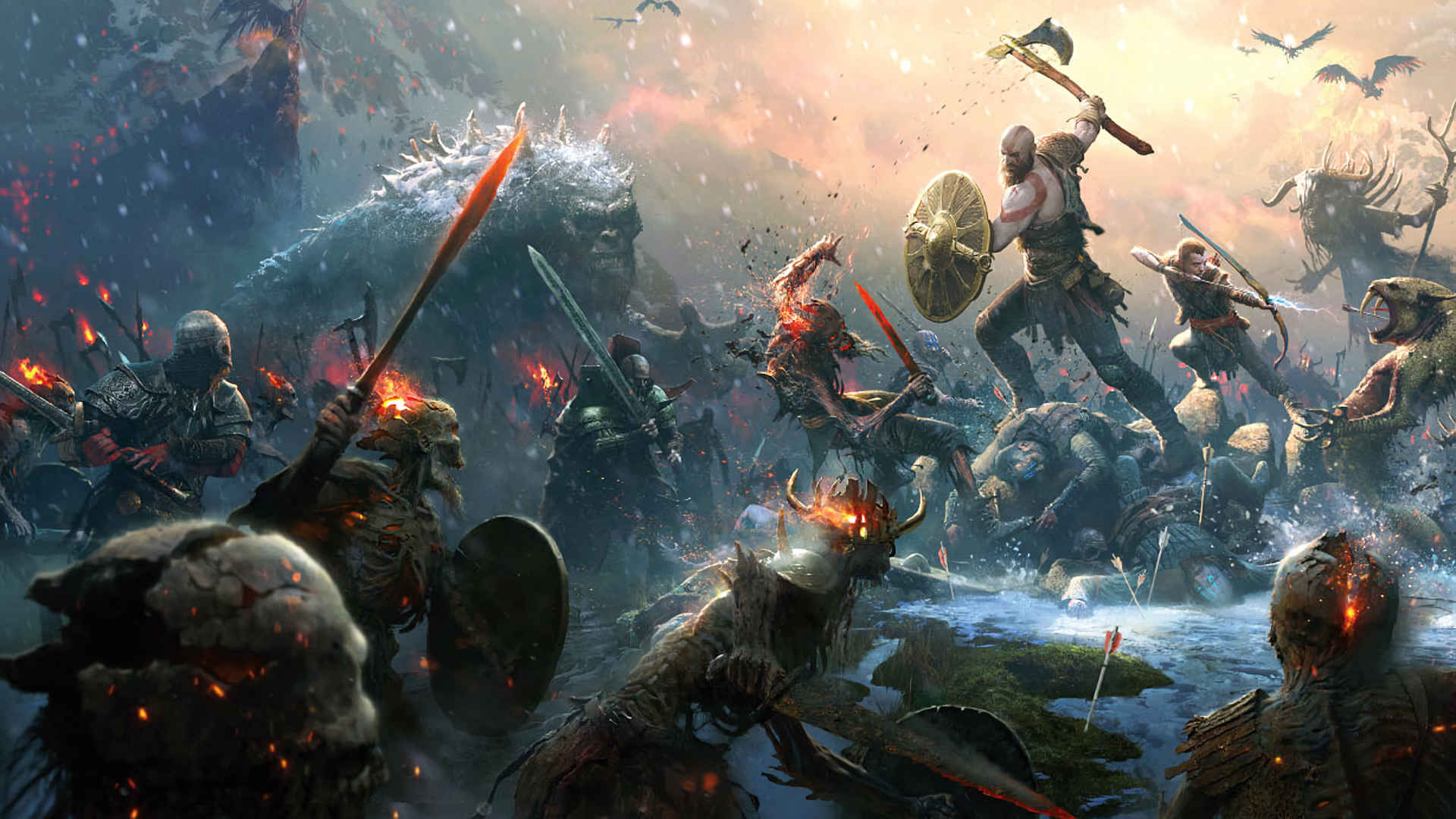When it comes to the things that influence your current tabletop role-playing campaign (herein TTRPG) the list can be..long. That’s also just probably your list? In truth, the players are adding their personal influences via a myriad of signals constantly.
What I’ve done here is to isolate the top three influences on my current TTRPG campaign. One inspired the idea and the next two were very intentional choices. I thought it would be interesting to expose those influences and explain why.
FATE and Fiction First
The game I’m currently running, on a break between season one and an unexpected season two (and COVID-19), is a Werewolf: The Apocalypse campaign inspired by the Werewolf: The Apocalypse 2nd Edition game.
The game uses the Fate Accelerated rules and it works very much on a fiction first model, in that the rules and the approach to the campaign model the fiction of the experience. I’m not going to go into the campaign beyond that. If you’re interested in a more in-depth view of it you can find it here.
Thor: Ragnarok
I love Thor: Ragnarok. I loved it from the moment I saw the trailer with the funky 80’s music, the fourth wall voice over and the appearance of The Hulk in the arena. Thankfully, the film wasn’t part of the trend you sometimes get these days that sets up a film that doesn’t exist when it hits the cinema.
I like Thor: Ragnarok because I think it changes the nature of film. It’s weird in that the films inspiration seems to be straight to VHS 80’s films, but with modern awareness, acting, writing and direction. This means it gets to do all the crazy experimental and throw everything in nature of 80’s VHS but without being a b-movie. It essentially created a modern, hip, highly kinetic and visual, yet character-driven, high quality 80’s VHS film and in every way it’s awesome.
How did this influence the game?
What struck me with respect to a future campaign was the visuals and the way it could throw stuff in that shouldn’t be seen together in one place and have it work. Just be bold and do it. Play it authentically no matter how crazy it gets.
At first the influence of Thor: Ragnarok on a future campaign was more direct. I got thinking about how I could run a campaign of super-powered space opera folks who visit mythic locations just hanging in space. A sort of mix between Thor: Ragnarok and Guardians of the Galaxy.
Then it changed. What is Ragnarok but the grand Viking end of times? What are the werewolves in Werewolf: The Apocalypse but Viking like heroes raging a final battle they are likely to ultimately lose? I always wanted to run Werewolf: The Apocalypse but never got the chance and I realised Thor: Ragnarok was my primary impetus to do it my way.
Let’s be clear, in tone, Werewolf: Accelerated is nothing like Thor: Ragnarok but some of the influences are clear:-
- The visuals are stolen from the film here and there. As an example the moon bridges are very much imagined as moon light equivalents of traversing the rainbow bridge.
- The heroic last battle of the Valkyrie shown in the form of a moving painting is definitely something I’ve used a few times and indirectly is just influences me descrining things in an operatic way.
- The destruction of Red Claw’s Demon Axe when Chernobog escapes was a bit like the destruction of Thor’s hammer in Ragnarok just leaving the handle.
- Ultimately, it’s about being confident enough to go balls to the wall with the grand and mythical, to an almost ‘this is insane’ level, but as long as you keep the personal emotional thread all will be fine.
I’ve always held back a bit before, despite being beholden to the Star Wars principle of why blow up a ship when you can blow up a planet, but Thor: Ragnarok freed my mind. Have the Werewolves battle an insect queen in the spiritual representation of an asteroid approaching Earth? Why not. Follow that up with the Werewolves descending into the underworld and collapsing it into non-existence? Hell yeah. Face Fenris himself in the Ahroun’s Graveyard of the Get of Fenris? Sure. It’s based on the 80’s Dungeons and Dragons cartoon after all.
Werewolf: Accelerated would not exist without Thor: Ragnarok. Like Star Wars was the primary influence on my gaming for many a year in terms of tone, mood and my view of how action should work Thor: Ragnarok gave me another primary influence and Werewolf: Accelerated was the result.
If Thor: Ragnarok was the creative, raw and crazy lightning strike what brought it all into focus? That brings us to God of War.
God of War
I loved the God of War video game. It was epic, yet emotionally authentic. It had large, ridiculously grandiose sets, yet remained personal and in the moment. The massive, set-piece encounters weren’t just fights they were structurally interesting. They were experiences you explored and puzzles you solved while regaling you with epic imagery all of their own.
How did this influence the game?
Can you kill something that big?
– Son of Kratos
I wanted the Werewolves in my game to be just a bit like Kratos. Epic in tone, yet emotionally authentic and personal in terms of their individual stories. Epic heroes that may face down ridiculously epic foes in the most fraught of times but ultimately it’s about a father, a son and a dead mother.
I wanted the visuals of the game where everything is louder than everything else, on a massive scale, and yet beautifully intimate at the same time. While visually stunning there also had to be history and warmth to draw people in and make it feel authentic.
I’ve never been a fan of the commonly held view that the more epic a TTRPG campaign becomes the less authentic it is. God of War proved you could be crazy epic and intimate at the same time.
Dungeons and Dragons 4E
I’ll let you into a secret: Dungeons and Dragons 4E is my favourite edition. It’s a much-maligned edition that is seeing a small renaissance now people have got some distance from the heat of the edition wars or are discovering it for the first time. I’ve played every edition once or a few times and for me 4E was the quintessential experience.
It’s sort of ironic, considering the ‘it’s not a role-playing game but an MMO video game’ accusations that people more orientated to story games and fiction first actually preferred it. In some cases, this was because it was a focused design, rather than the simulative gamist challenge mess of other editions (especially 3E), but also because it seemed to facilitate a fiction approach more than other editions. I tend to think 4E shifted the Dungeons and Dragons experience from simulative / gamist challenge to story / gamist challenge though I know many people will disagree with this.
How did this influence the game?
What I loved though, with respect to the topic at hand, was the way it approached encounters. It put everything into making them diverse and interesting. Basically, you know those God of War encounters I liked? Well, I was reminded 4E had a way of practically delivering them.
4E didn’t put the focus on simulating a setting, with creatures that acted exactly like people in the rules or simulated some sort of ecology. Instead, the focus was on delivering interesting encounters with monsters being a series of effects (some logically associated with their ecology, but it wasn’t the primary driver), lair actions, way to change up the action economy for the truly epic creatures. They are interesting and exciting challenges in fantasy imagery form.
It always felt like you were doing and dealing with much more than just beating down on a bag of hit points.
You know what? Despite a system like 4E and Fate being, some would say, at the opposite ends of the TTRPG spectrum on this they can function surprisingly similar. Everything is a character rules combined with stress tracks and a few other things make construction 4E type confrontations that still play very much like Fate entirely logical.
I happen to think it worked brilliantly.
The Subconscious Influence

I realised this influence on 12th September 2021 when resuscitating the campaign for the return to face-to-face gaming.
After re-watching Star Trek: Discovery all the way through and looking at resuscitating this campaign on the same weekend I realised I’d been nudged to watch it out of nowhere because its whole approach to its story inspired the campaign. Star Trek: Discovery’s grand, operatic, melodramatic and serialised narrative is very similar in concept (if not content).
Definitely an unconscious influence on how I approached the campaign.
The Influence That Never Was
I went into Werewolf: Accelerated a bit paranoid about modern technology. Not in a way that paralysed me creatively just I’d rather not be dealing with the incongruities way. As a result, I had the idea that Werewolf: Accelerated would be contemporary adjacent a bit like Riverdale and very specifically The Chilling Adventures of Sabrina.
It’s in the two-page pitch that the setting is now, but in terms of technology and ethos a bit like a displaced eighties. It sort of worked in my mind to conjure up a world humans lived in where the mythical force of entropy had taken control of reality.
It’s an influence that never was because the go big or go home tone of the first session basically just renders it all irrelevant. Yes, the Werewolves exist in our world but the epic tone is such that the real world is almost irrelevant beyond backdrop colour – most of the time the Werewolves are going to ‘Werewolf locations’ or to mythical places in the Umbra. It ceased to be contemporary adjacent in the form of The Chilling Adventures of Sabrina and became contemporary irrelevant due to the true world the Werewolves interact with when going full-on Viking, Ragnarok epic in a short campaign.
As for all the modern technology and paranoia of Werewolves being constantly filmed? If there is a chance that is what would factually happen we just ignore it. The werewolves effect on the human psyche is meant to provide an in-game reason for not having to worry about it so we don’t. After all, why make it hard for ourselves?
And, Finally…
I’ve always been influenced by other media in the TTRPG games I’ve run. A lot of the time the journey from screen to table has been more direct. I’ve actually been running a Star Wars or Star Trek campaign. It’s also true to say my influences haven’t changed significantly over time, not at the core.
Until recently, when I believe film, in the form of some of the MCU films, took genre media to another level, and in the form of video games, without a doubt, God of War is a work of art on anyone;’s measure equal, if not better in my view, than The Last of Us.
I tend to like my TTRPG endeavours to have a bit of a challenge associated with them. A can I actually deliver this question. It’s sort of essential to why I run games. So the whole will this actually work was certainly part of the reason for diving in to Werewolf: Accelerated.
Where I give myself a smidgeon of credit is being able to take those influences and turn them into something that was enough of an experience that the players could take to it and add to it in every monent and in doing so we created something I (and I’d like to say we) am very proud of.
And that is good.

